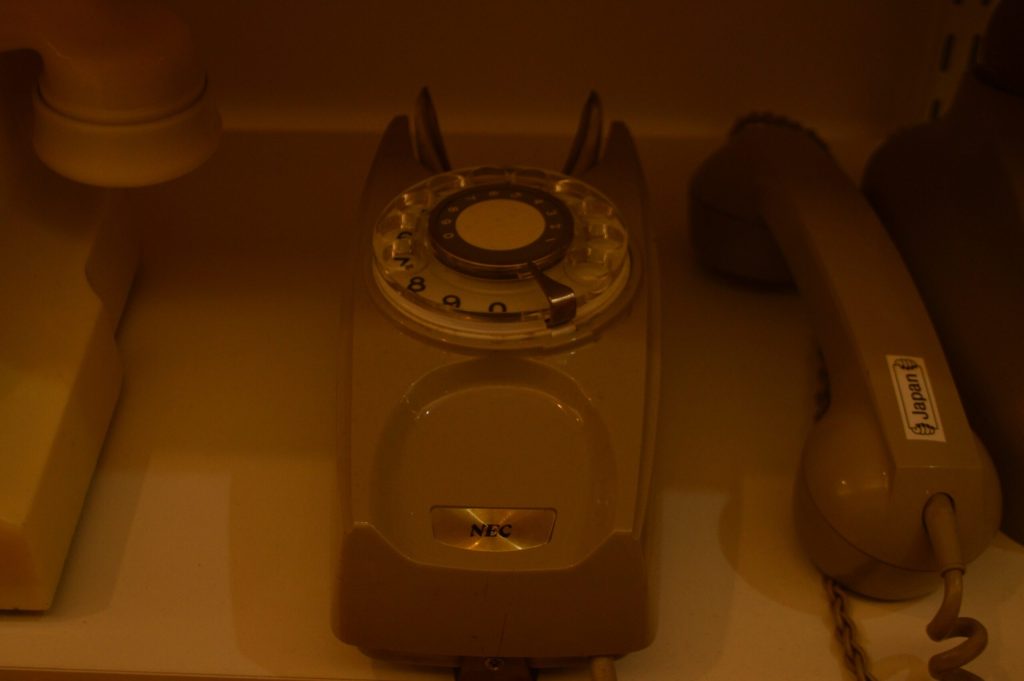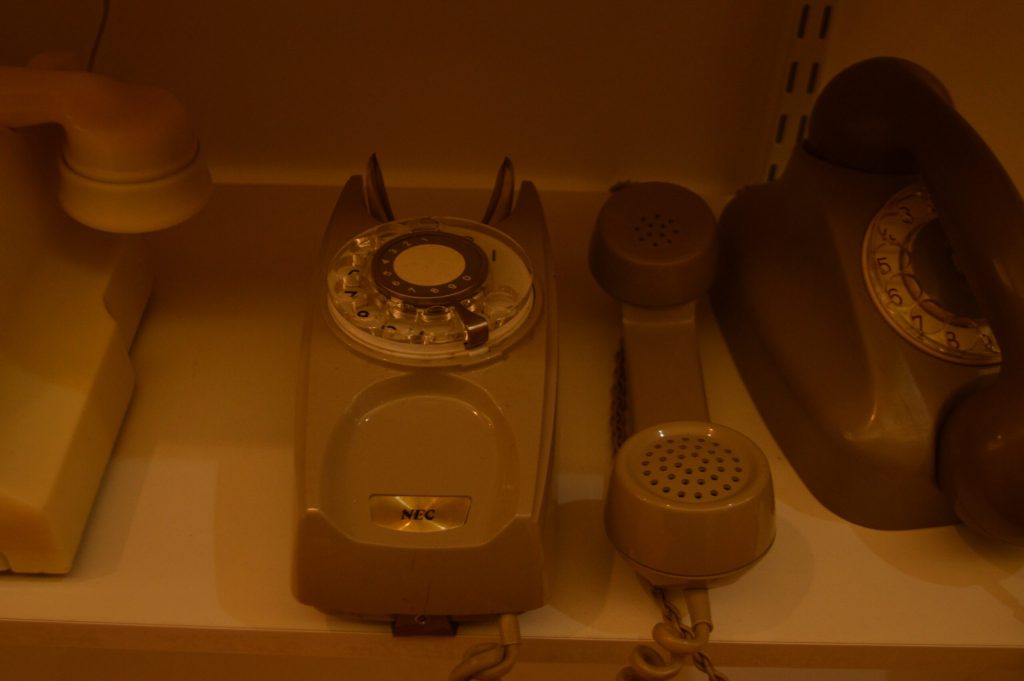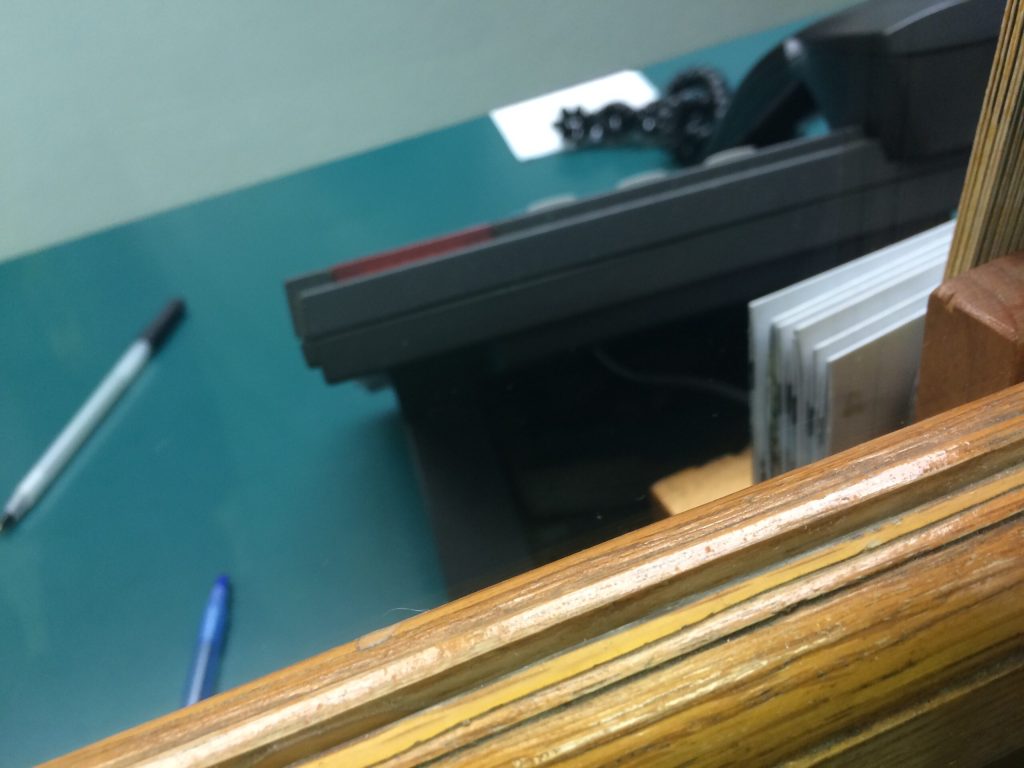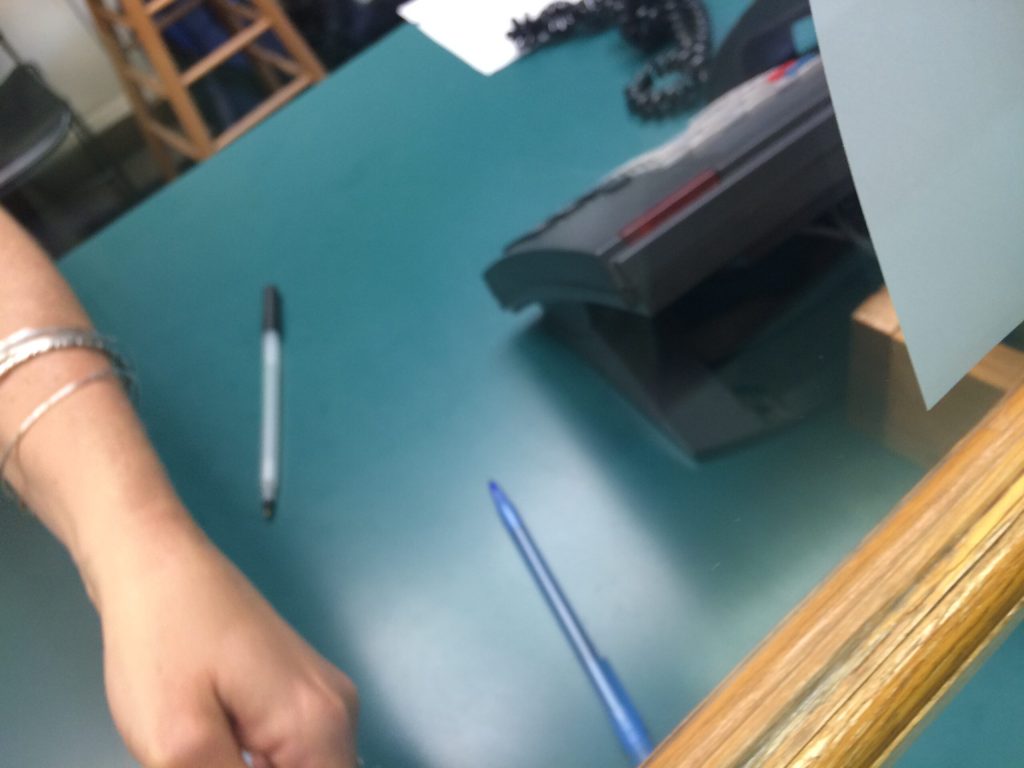On my way home from my vacation (after clocking nearly 1,400 mile round trip in Northern New England), I stopped by the New Hampshire Telephone Museum. This was found in their foreign section. I do not know the details of this NEC set, just wanted to post it for equal opportunity purposes.
POTD: Avaya Red 8410 DCP Telset Attitash Grand Summit Resort | Bartlett, NH
This was taken at the front desk at the Attitash Grand Resort Conference Center in Bartlett, NH. This area in the building is where you can only spot the digital sets. The nearby bar, conference rooms and rooms use analog sets. There is no evidence of any attendant consoles ether.
I’ve frequented this facility during the spring time over the last four years for an annual conference. I no longer attend, and I like the place, so I went for the vacation this week. The people I used to see at the front desk were not working (or is no longer working there) to see if I could see the switch room.
POTD: Western Electric Crank Telephone | Cannon Mountain Tram Station | Franconia, NH
This is another crank telephone I spotted at Cannon Mountain. There is at least three of these and after Monday, I might had spotted and have at least a capture of them all from my visits over the last couple of years.
As you can tell in this second picture, there is a Shure like gooseneck mic, I wonder if phone is really a wiring box for intercom as my state government is known to be very frugal.
*
POTD: Zeb’s General Store | North Conway, NH
Phone of the Day: Mitel Superset – Cannon Mountain Tramway
In New Hampshire we have mass transit. Not to get to work per se, but to enjoy natural beauties.
How you get to this tram, is to the Franconia Notch State Park, and the Cannon Mountain facility on Exit 32 B on I93. This facility I believe is still owned by the State of New Hampshire’s Department of Resources and Economic Development, known by it’s true acronym as DRED. DRED and several other state agencies (Department of Safety, the Liquor Commission and Department of Health and Human Services) had jumped on the Cisco bandwagon since the last decade. This facility has been unscathed as they probably use a Mitel SX system, I’m going to assume SX 50 given the low port density.
Phone of the Day: Zeb’s General Store – North Conway, NH
While I am on a (much needed) vacation, I found this general store in the heart of downtown North Conway, on NH route 16.
This general store is a quarter century old and 1991 was actually not a general store. The store itself is set to an old fashioned theme. Staff told me that they acquired antiques over the years to give it it’s classic appearance. Another store about 13 years ago not to far away in the rural area had changed owners and had modernized it, turned away locals and changed management. That’s a complete no-no in business. Don’t fix what’s broken.
Telephony 101: Centrex
Central Exchange (or Centrex) is a service provided by many telephone carriers to deliver PBX or Key-like services via the telephone company (or Telco.) Little to no hardware is required at the customer end, unless its special adjuncts for digital telephones for power, etc. Regardless of the hardware, the “brain” lives out in the “cloud” so to speak at the central office. If it’s a government, or a large corporation, rarely are these actually installed on site.
POTD – Local Kohls

In today’s Phone Of the Day I recently took this picture of a Mitel IP 5212 set (if memory serves me) at the Bedford NH store. This Kohls has a few IP telsets and boatloads of analog sets all across the sales floor. There are no sets near the fitting rooms. This store was built within the last five years around the time where perhaps Kohls was in a position of like a dysfunctional marriage: Do I stand with my man? (i.e. sticking to Avaya.) Don’t forget in early 2010s there was a bunch of doubt whether if Avaya would continue in supporting an overrated brand of telephony equipment. There is probably many reasons why in newer stores (of which popped up in my area, as their stores came to my area around 2002 – of which the Norstar 7200s are still in use in those locations) and other reasons such as higher maintenance contracts if you go through Avaya directly and the change of the user interface. Continue reading
POTD: Whole Foods Market Bedford, New Hampshire
In recent weeks, the world’s newest Whole Foods Market opened in Bedford, NH. Built on top of the legendary Wayfarer Inn (known more during the Primary Election years), it’s also within hundreds of feet of the now torn down Macy’s.
As proof from Joe the UCX Guy from Chicago, many Whole Foods stores are Cisco shops. Interestingly, the WFM in Nashua, just miles on the Everett Turnpike, is wired for TDM telephony using Toshiba’s Strata system (opened in 2014 to replace a former Market Basket.) Building was totally gutted and rebuilt mostly from the ground up.
The store in Bedford is mixed with 7942s and the 6902s at the cashier’s lane. Paging works, as teenage girls don’t know how to lower their octaves and learn how to page professionally.
The 7900s are still in the market, despite the more cheaper quality sets being deployed more and more. The 7900s are in a depreciation mode. Current generations are all multi lines, Java based and/or colored displays and I was surprised to see a 7942 because I believe its End of Sale.
I snapped two pictures, one showing how much characters you can use to describe your telephone extension. If the characters can’t fit on the top black colored indication bar, it will break the description up in two screens
Personally, these devices are just “endpoints” – they are PCs acting as telephones. Sure Mitel, and Avaya and others sell the same thing (and acts the same way), but for sales people or the accountants, its just another device attached to the Internet and it shouldn’t be treated special like a office telephone. These phones are not easy to manage outside of expensive Cisco solutions or if you like to code and reverse engineer – be my guest! I feel like the 7900s were always a 2554 with Internet connectivity and a great audio quality of its SCCP signaling.
Other than that, Cisco just keeps on winning on selling “free” gear and report them as “profits” by smooching up to the CIOs and heads of IT departments at the Fortune 500 companies. You think I am kidding???











